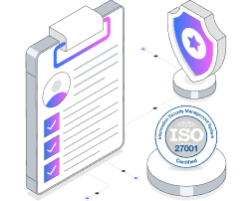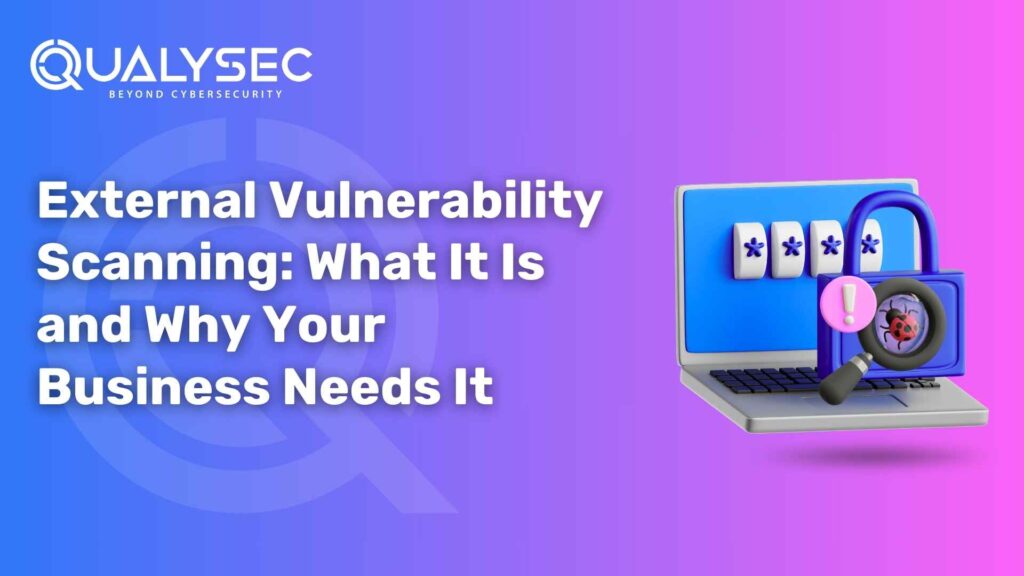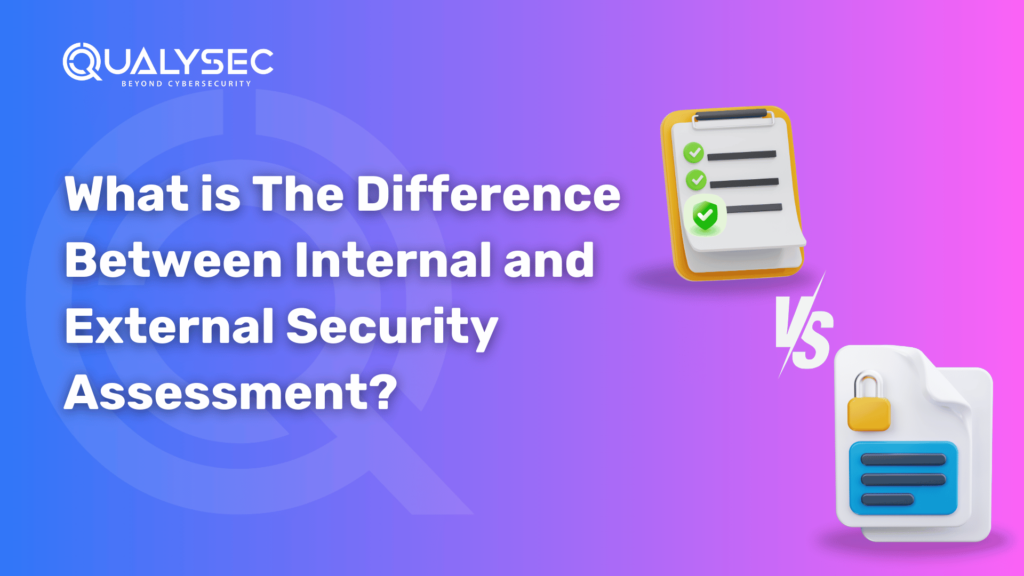External Vulnerability Scanning: What It Is and Why Your Business Needs It
Because attackers are constantly looking for unprotected backdoors, you may have invested in firewalls, endpoint protection, or employee training, but the backdoor might still be widely unguarded. External vulnerability scanning becomes a critical piece of your cybersecurity strategy when your business is intended to operate as an external service. However, what is it, why is it necessary for modern companies, and how does it work? Qualysec Technologies is here to dive deep into it! What Is External Vulnerability Scanning? An external vulnerability scan is a security assessment process, as internet-facing infrastructure (such as web servers, email gateways, APIs, etc.) can be potentially exposed and vulnerable to attack through scans. In contrast to internal scans that search for vulnerabilities on your private network, external scans are conducted from outside your network perimeter, giving an impression of the view from a social hacker. Find out about vulnerabilities such as open ports, outdated software, misconfigurations, and unprotected APIs, before the cybercriminals. Proactively identifying these weaknesses allows you to patch them, thereby reducing the risk of a breach. How Does An External Vulnerability Scan Work? 1. Asset Discovery The scanner proposes to map all of your organization’s digital footprint by exposing internet-facing assets associated with your domain. For example, websites, subdomains, public IP addresses, and cloud resources. 2. Port Scanning Security professionals check these assets for open ports, which might indicate running services. They may have potential entry points that attackers can exploit. 3. Service and Banner Grabbing It usually looks at service banners and publicly available software configuration data to determine services, versions, and configurations of the software. 4. Vulnerability Identification The scanner utilizes extensive vulnerability databases (e.g., CVE and some proprietary ones) to check for known vulnerabilities, misconfigured or missing security patches. 5. Risk Prioritization The severity and potential impact of detected vulnerabilities will be scored based on the CVSS, such as the Common Vulnerability Scoring System, to aid in prioritizing remediation. 6. Reporting Detailed reports are compiled from the results, and critical issues are highlighted. Assets affected are recorded, and remedies are suggested. Latest Penetration Testing Report Download 7. Remediation and Rescanning After the vulnerabilities are fixed, follow-up scans verify that no new issues have been introduced once the fixes are in place. What Does External Vulnerability Scanning Detect? The External Vulnerability Scan detects many security issues, including – Open Ports – Unnecessary or unsecured ports can open up your services to the internet. Outdated Software – They are prime targets for attackers. Misconfigurations – Weak authentication, overly permissive firewalls, or poor security settings. Publicly Accessible APIs – Absence of secure authentication and encryption exposes sensitive data. Sensitive Information Disclosure – It is the accidental disclosure of confidential data through misconfigured servers or services. Protocols – Systems use outdated SSL versions, weak encryption, or insecure protocols (such as HTTP instead of HTTPS, or old versions of SSL/TLS). Unmonitored Assets – Organizations may add new devices or services since the last scan without properly securing them. How an External Vulnerability Scan Benefits Your Business 1. Reduce Your Attack Surface You should consider an attacker likely to target every piece of internet-facing property. By scanning the outside and putting your external attack surface on the same level of security as the inside, an External Vulnerability Scan helps you discover and secure these entry points. This shrinks your attack surface and makes it less likely for cybercriminals to find a way in. 2. Proactive Threat Detection Instead of waiting for an attack to expose a vulnerability, external scans help you identify and close the gaps before attackers can exploit them. However, a proactive approach is a far better way to spend than dealing with the trouble of a breach afterwards. 3. Regulatory Compliance Also, many industry regulations, such as PCI DSS, HIPAA, and GDPR, require regular vulnerability assessments of external systems. With external vulnerability scanning, you indeed meet these mandates and avoid costly fines or a bad reputation. 4. Continuous Security Improvement The digital world contains both old and new elements. Vulnerabilities surface, new services emerge, and attackers adopt more tactics. Regular external scans allow you to catch emerging threats before they become a problem and ensure you always have a strong security posture. 5. Find Shadow IT and Rogue Assets Employees can throw away cloud services or web applications without IT’s awareness. These ‘shadow IT’ assets can be found through external scans and brought under proper security management. 6. Demonstrate Security Commitment Maintaining a serious approach to cybersecurity means that clients, partners, and stakeholders want assurance that you take them seriously. Regular vulnerability scanning, especially one performed by reputable providers such as Qualysec Technologies, shows how committed you are to protecting sensitive data and maintaining discipline in keeping your customers’ trust. External Vulnerability Scan vs. Internal Vulnerability Scanning A complete security strategy requires the participation of both types of scans. External scans protect you from outside threats, while internal scans target threats within your organization. Aspect External Vulnerability Scan Internal Vulnerability Scan Perspective Outside the network (attacker’s view) Inside the network (trusted user’s view) Scope Internet-facing assets (web servers, APIs, cloud resources, etc.) Internal systems (workstations, servers, internal apps) Purpose Identify weaknesses visible to outsiders Find vulnerabilities that insiders could exploit Typical Use Cases Perimeter defense, regulatory compliance, third-party assurance Insider threat mitigation, lateral movement prevention Frequency At least quarterly, after major changes Regularly, and after significant internal changes How Often Should One Perform the External Vulnerability Scanning? External scans are usually recommended at least once every quarter. Yet, best practices recommend scanning more often, for example, monthly, or after any change to your network or applications. In high-security environments or organizations that are targeted, it may be necessary to conduct scans more frequently. Common Myths About External Vulnerability Scan Myth 1 – Firewalls Alone are Enough Firewalls are critical, but they can’t defend against the vulnerabilities of exposed applications, misconfigurations, or new assets. External scans are a best practice to help see what is accessible from the outside. Myth 2





